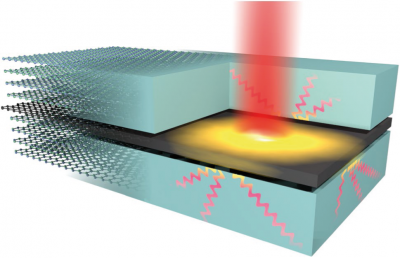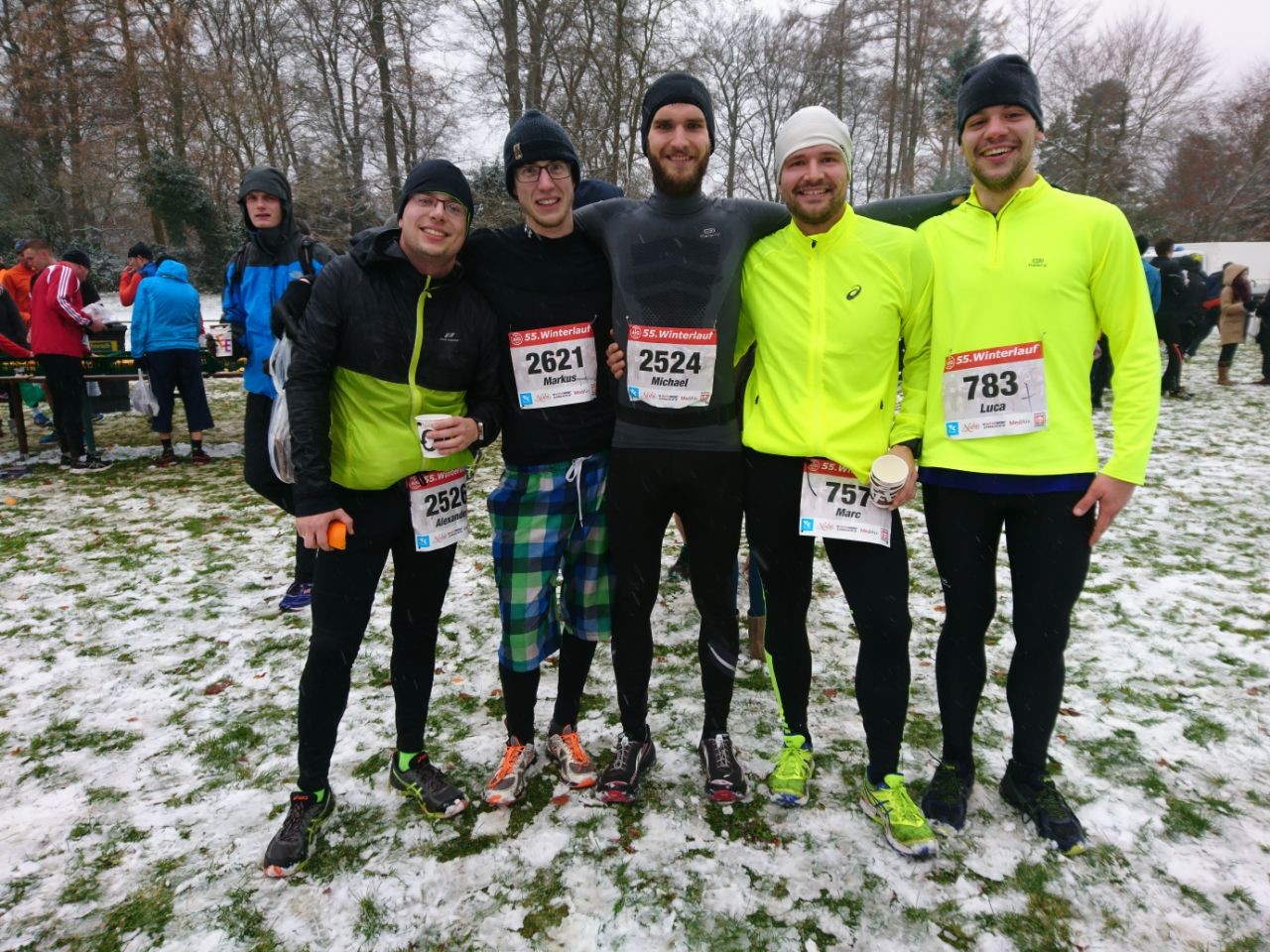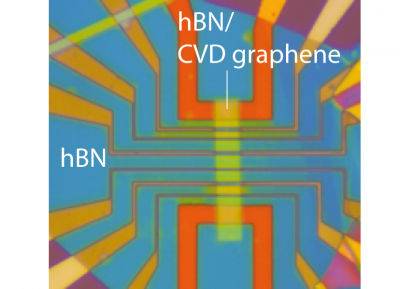Current events
Next talk on Tuesday in 2 days by Katrin Hecker.
News 06.06.2025
New publication:Anisotropic supercurrent suppression and revivals in a graphene-based Josephson junction under in-plane magnetic fields
Site Content:
19.01.2018
Sebastian Staacks, Heidrun Heinke & Christoph Stampfer have been nominated for the "Lehrpreis Physik 2018"
Sebastian Staacks, Heidrun Heinke and Christoph Stampfer have been nominated by the Fachschaft Physik for the "Lehrpreis Physik 2018" in the category of "Beste unterstützende Lehre" for their work on the physics app "phyphox".

10.01.2018
New publication: Out-of-plane heat transfer in van der Waals stacks through electron–hyperbolic phonon coupling

Nature Nanotechnology 13, 41 (2018) Van der Waals heterostructures have emerged as promising building blocks that offer access to new physics, novel device functionalities and superior electrical and optoelectronic properties. Applications such as thermal management, photodetection, light emission, data communication, high-speed electronics and light harvesting require a thorough understanding of (nanoscale) heat flow. Here, using time-resolved photocurrent measurements, we identify an efficient out-of-plane energy transfer channel, where charge carriers in graphene couple to hyperbolic phonon polaritons in the encapsulating layered material. This hyperbolic cooling is particularly efficient, giving picosecond cooling times for hexagonal BN, where the high-momentum hyperbolic phonon polaritons enable efficient near-field energy transfer. We study this heat transfer mechanism using distinct control knobs to vary carrier density and lattice temperature, and find excellent agreement with theory without any adjustable parameters. These insights may lead to the ability to control heat flow in van der Waals heterostructures.

21.12.2017
New publication: Weakly-Correlated Nature of Ferromagnetism in Nonsymmorphic CrO2 Revealed by Bulk-Sensitive Soft-X-Ray ARPES
Phys. Rev. X 7, 041067 (2017) Chromium dioxide CrO2 belongs to a class of materials called ferromagnetic half-metals, whose peculiar aspect is that they act as a metal in one spin orientation and as a semiconductor or insulator in the opposite one. Despite numerous experimental and theoretical studies motivated by technologically important applications of this material in spintronics, its fundamental properties such as momentumresolved electron dispersions and the Fermi surface have so far remained experimentally inaccessible because of metastability of its surface, which instantly reduces to amorphous Cr2O3. In this work, we demonstrate that direct access to the native electronic structure of CrO2 can be achieved with soft-x-ray angle-resolved photoemission spectroscopy whose large probing depth penetrates through the Cr2O3 layer. For the first time, the electronic dispersions and Fermi surface of CrO2 are measured, which are fundamental prerequisites to solve the long debate on the nature of electronic correlations in this material. Since density functional theory augmented by a relatively weak local Coulomb repulsion gives an exhaustive description of our spectroscopic data, we rule out strong-coupling theories of CrO2. Crucial for the correct interpretation of our experimental data in terms of the valence-band dispersions is the understanding of a nontrivial spectral response of CrO2 caused by interference effects in the photoemission process originating from the nonsymmorphic space group of the rutile crystal structure of CrO2.

05.12.2017
"Winter run" 2017
Our Institute participated sucessfully in the "55. ATG - Winterlauf" 2017. Withstanding the freezing temperatures and a heavy snow storm, together with almost 2000 other participants, Michael (1:16:48), Markus (1:27:05), Marc (1:28:53), Luca (1:29:00) and Alex (1:35:59) well mastered the difficult 18km course from Mulartshütte to Aachen and had a lot of fun. Congratulations!


09.11.2017
New publication: Aharonov-Bohm oscillations and magnetic focusing in ballistic graphene rings

Phys. Rev. B 96, 205407 (2017) We present low-temperature magnetotransport measurements on graphene rings encapsulated in hexagonal boron nitride. We investigate phase-coherent transport and show Aharonov-Bohm (AB) oscillations in quasiballistic graphene rings with hard confinement. In particular, we report on the observation of h/e, h/2e, and h/3e conductance oscillations. Moreover, we show signatures of magnetic focusing effects at small magnetic fields confirming ballistic transport. We perform tight-binding calculations which allow us to reproduce all significant features of our experimental findings and enable a deeper understanding of the underlying physics. Finally, we report on the observation of the AB conductance oscillations in the quantum Hall regime at reasonable high magnetic fields, where we find regions with enhanced AB oscillation visibility with values up to 0.7%. These oscillations are well explained by taking disorder into account allowing for a coexistence of hard- and soft-wall confinement.

09.10.2017
New publication: Dry-transferred CVD graphene for inverted spin valve devices

Appl. Phys. Lett. 111, 152402 (2017) Integrating high-mobility graphene grown by chemical vapor deposition (CVD) into spin transport devices is one of the key tasks in graphene spintronics. We use a van der Waals pick-up technique to transfer CVD graphene by hexagonal boron nitride (hBN) from the copper growth substrate onto predefined Co/MgO electrodes to build inverted spin valve devices. Two approaches are presented: (i) a process where the CVD-graphene/hBN stack is first patterned into a bar and then transferred by a second larger hBN crystal onto spin valve electrodes and (ii) a direct transfer of a CVD-graphene/hBN stack. We report record high spin lifetimes in CVD graphene of up to 1.75 ns at room temperature. Overall, the performances of our devices are comparable to devices fabricated from exfoliated graphene also revealing nanosecond spin lifetimes. We expect that our dry transfer methods pave the way towards more advanced device geometries not only for spintronic applications but also for CVD-graphene-based nanoelectronic devices in general where patterning of the CVD graphene is required prior to the assembly of final van der Waals heterostructures.

25.09.2017
New publication: High quality factor graphene-based 2D heterostructure mechanical resonator

Nano Lett. 17, 5950 (2017) Ultralight mechanical resonators based on low-dimensional materials are well suited as exceptional transducers of minuscule forces or mass changes. However, the low dimensionality also provides a challenge to minimize resistive losses and heating. Here, we report on a novel approach that aims to combine different 2D materials to tackle this challenge. We fabricated a heterostructure mechanical resonator consisting of few layers of niobium diselenide (NbSe2) encapsulated by two graphene sheets. The hybrid membrane shows high quality factors up to 245'000 at low temperatures, comparable to the best few-layer graphene mechanical resonators. In contrast to few-layer graphene resonators, the device shows reduced electrical losses attributed to the lower resistivity of the NbSe2 layer. The peculiar low temperature dependence of the intrinsic quality factor points to dissipation over two-level systems which in turn relax over the electronic system. Our high sensitivity readout is enabled by coupling the membrane to a superconducting cavity which allows for the integration of the hybrid mechanical resonator as a sensitive and low loss transducer in future quantum circuits.

